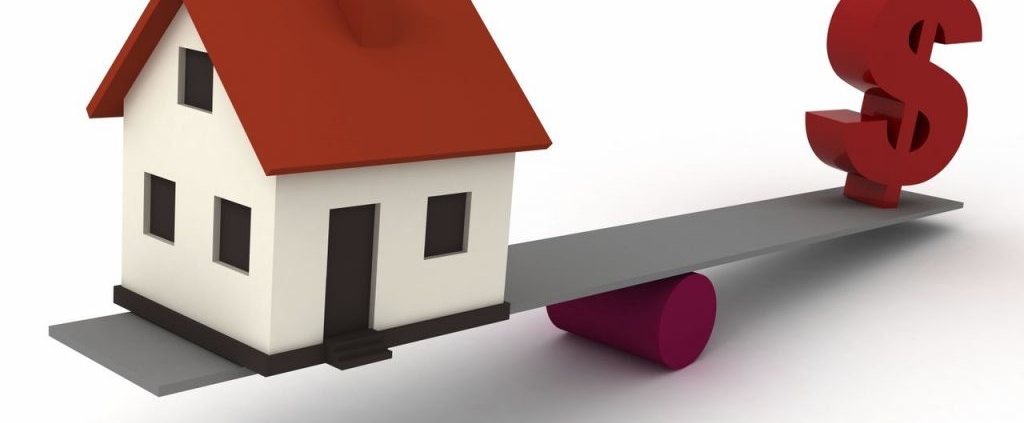What Every Seller Needs to Know About the Home Appraisal Process
Determining the value of a property before putting it on the market is a notoriously complicated process, which can be done in a variety of ways.
Many home sellers use online home value estimators like Value Our House or Lendi to get an approximate idea of what their property might be worth, but realise soon enough that an estimate is not always a guarantee of what a home will ultimately sell for. This is, of course, due to the unpredictable nature of the property market, both local and international.
Typically, the real estate agent who is helping you sell your property will do a comparative market analysis of properties similar to your own in the same suburb or city.
By looking at the type of property you’re selling, it’s size and features, the suburbs and local area, the property’s interior and exterior features, yard features and the mechanics and style of the property, and then comparing these to similar properties in the city or suburb, your real estate agent will be able to make an accurate, fair and attainable estimate of what your home is likely to sell for.
This is not to say that your property will eventually sell for the price you and your real estate agent estimate. Conducting a home appraisal can even more accurately estimate of how much you should ask for your property.
Why Do You Need a Top Market Value Appraisal?
While a comparative market analysis, done by an experienced and qualified real estate agent is a good place to start, you’ll be protecting yourself and guaranteeing you get the price you want by employing a professional home appraiser to determine the appraised value of the property before finalising a selling price with your real estate agent.
Home sellers should note that there is a difference between the assessed and appraised value of a property. The assessed value of a property refers to the tax value of said property, but the appraised value is only determined when a professional appraiser has taken a keen look at the features of the property, taking into consideration the size of the property, its type of construction, its location, its condition, as well as recent sales of comps within the vicinity of the property.
The appraised value of the home (also known as its market value) may differ or may be the same as its assessed value, and this often depends on how recently the property assessment was done – assessments are usually conducted on a one to three-year cycle. Sellers must keep in mind that the sale of comparable properties in the area will certainly have an influence on what value the home appraiser assigns to their property, as previous sales in the city or suburb are used as a barometer for banks and other lenders, protecting them against artificially inflated home prices.
A potential buyer may well be willing to pay the price set by the home seller, but the institution they are using to finance the home may not want to lend the same amount to the buyer if it differs too much from the estimated value of comparable properties in the city or suburb. This is exactly why doing a home appraisal before even setting a selling price on your property can save a lot of hassle later in the selling process.
At what point does the home appraisal process actually happen?
Buyers often request a home appraisal after the purchase agreement – this is a contract, setting out the terms of the sale determined by the seller and the buyer. Many buyers even include appraisal contingency clause in the purchase agreement, stipulating that ownership will only officially be transferred to the buyer following a home appraisal.
For example, appraisal contingencies may specify that the buyer is allowed to negotiate about the price, should the home appraiser find that the property is worth less than price agreed upon by the buyer and the seller in the purchase agreement.
Home sellers will benefit by ordering a home appraisal of their own before deciding on a selling price for their property. The benefits for sellers are twofold: it saves the seller from having to renegotiate a sale (or risk losing a sale altogether) and it also sets the minds of buyers at ease that the seller is not trying to swindle them with ridiculous prices.
Still, sellers should have no doubt that the prospective homebuyer will have a home appraisal done before ownership of the property is officially transferred, so there is no use in trying to sell at a price that is too high.
What’s the difference between a home appraisal and a home inspection?
The key difference between a home inspection and a home appraisal relates to the purpose of each of these two types of evaluation.
The main purpose of a home inspection is to determine the safety and condition of the property that is on the market. A home inspector will keenly examine the entire property, keeping an eye out for damages like cracks in walls, damaged or cracked building foundations, roof damage and instability, the presence of termites or other pests or damages caused by them, plumbing issues, or any other factors that may signal that the house is in need of much-needed renovations or repairs.
On the other hand, a home appraisal is concerned with the numbers, and aims to determine the market value of the entire property by means of a thorough examination of the home itself, and of its features and amenities, set against the background of comparable properties in the same city or suburb.
A home appraiser uses three methods in combination to settle on the fair market value for your home.
When your real estate agent refers to the fair market value of your property, they are talking about how much it is really worth. As we mentioned earlier in this article, determining this value can be done in a variety of ways, like conducting a comparative market analysis or comparing the property with others online. One of the most accurate ways of finding out what a home is really worth in order to decide on a price for the property which is fair to the seller, but is still realistically attainable in current market conditions, is to have a home appraisal done.
Professional home appraisers use three different methods in order to award a fair market value to the property that they are evaluating.
– Method 1: The Sales Comparison Method
Comparable properties in the city or suburb where your property is situated will have a significant influence on how much your own property is able to fetch. Banks and other lenders tend to use the Sales Comparison Method, also known as the market data approach, to decide whether they will finance a home, or not.
This method entails analysing a few – three or four, usually – comparable properties that have recently sold in the vicinity of the property which is being appraised. While other data like market trends and public tax and land records may also be included to make a more accurate estimate, the home appraiser will usually look at the shared attributes between properties similar to yours that have recently been sold.
These attributes include, but are not limited to the location of the property, its square footage, the number of rooms and bathrooms, the overall condition of the property, amenities and other physical components like garages or swimming pools, together with the proximity of the property to schools, shopping centres and other amenities.
– Method 2: The Cost Approach
When a property is newly constructed, home appraisers might decide to opt for the Cost Approach. Three factors come into play here.
- The cost of land
Valuing the plot of land a property is built on allows appraisers to interpret how any given piece of land can be put to its “best use”, and provides a conservative baseline for the property valuation.
- The cost of building
When using the Cost Approach, property appraisers also need to factor in what the “replacement cost” would be if the existing structure is rebuilt using labour and materials available in the market at that specific time.
- Depreciation
To calculate the depreciation of the property, home appraisers will consider factors that may have caused the property, leading to a loss in value. This includes signs of physical deterioration (wear and tear on the building), functional deterioration (out-dated property features which have become obsolete) and external deterioration (for example, a spike in crime rates in the area).
The home appraiser will use these parameters and determine the value of the property by using the formula below.
(Cost of land) + (Cost of building) – (Depreciation) = The value of the property
– Method 3: The Income Method
Primarily used to appraise commercial or investment property, the Income Method determines the value of a property that generates income by considering its net income along with other factors.
The Reconciliation Phase
During this part of the appraisal process, the home appraiser will triangulate towards a final value for the property, taking all the different approaches they have used into account.
The Home Appraisal Process is Unique to Your Home
A home appraisal is a valuable tool for home sellers because it most accurately determines what a property is worth. Every home appraisal is unique, and despite comparable properties being such a cardinal part of the appraisal process, no two appraisals are exactly the same.
Conclusion
A home appraisal gives you and your real estate agent the best idea of what amount to put next to your property listing. Still searching for someone to help you sell? Contact Perfect Agent today!




